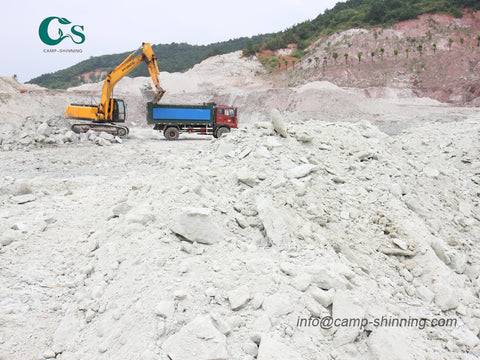How is bentonite sodiumized?
| Doris Chen
odiumization of Bentonite:
The sodium modification of bentonite is a process of converting calcium-based bentonite into sodium-based bentonite under certain conditions by adding modifying agents (such as Na2CO3, etc.) and certain processing treatments (extruding, rolling, etc.). The research shows that calcium bentonite exists in the state of aggregation under natural conditions. Therefore, in the process of sodiumization of calcium-based bentonite, except the necessary free Na +, some measures should also be taken to separate the crystals, increase the specific surface area of calcium-based bentonite, and accelerate the process of Na+ exchange Ca2+. In recent years, a lot of progress has been made in sodium modification of calcium bentonite. In summary, the main methods of artificial sodium treatment are as follows:

Suspension method:
In this method, calcium bentonite and soda are added to the water while preparing the bentonite slurry, and the amount of alkali added is determined by the maximum wet viscosity and the minimum water loss. Generally, excess alkali should be added, and the liquid-solid ratio is 1 :1 to 1:8,after soaking and beating, it is dehydrated, dried and grinded to obtain sodium base soil,this method is often used in combination with wet purification.
Aging method (Stock yard method):
In the raw ore or processed dry powder, according to the required amount of Na+ (usually 3% - 5% of Na2CO3 amount of ore), it is added into aqueous solution and then mixed and stacked. The moisture content of the whole ore is controlled at about 30%, stacking time (aging) 7 to 10 days, and often turning and mixing, it will be better if it can be supplemented by rolling. Dry and grind after aging. This method has poor sodiumization efficiency.
Extrusion method:
In this method, the clay particles of montmorillonite are separated by adding modifier and applying certain pressure (mainly shear stress) to accelerate the process of Na + exchanging Ca2+. At the same time, a part of mechanical energy can be converted into heat energy in the extrusion process, and the reaction temperature can be increased. Under the action of extrusion, relative movement between crystal layers and the clay particles occurs to separate, which also increases the contact area of Na + ions, which is conducive to the process of sodiumization. And extrusion can also cause bond breakage in montmorillonite crystals, which is good for adsorbing Na + with opposite charge, good for hydration of montmorillonite, and improving its hydration performance. This method is also the most commonly used sodium modification method at home and abroad since the 1970s. It has achieved good results in upgrading and improving calcium base soil and low-grade sodium base soil.
